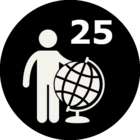I have a sample file from a gridded wave model for a small section on the South coast of England, ie it is a lat/long grid covering a few hours with 11 variables (wave height, wave period, that sort of thing) for each hour. I can view the file with Panoply.
While the larger spatial overview is great, I would love to extract a time series for a couple of grid cells with all parameters so i can for example compare the data with measured wave buoy data.
It should be quite easy as the the output should just be a table with the 11 variables as columns and each hour as a row (in a date/time format), but given the netcdf format this does not seem quite so straight forward - at least at my level of FME understanding :-) .
Not urgent but any pointers would be very welcome.
Thanks!



